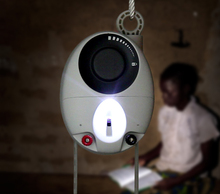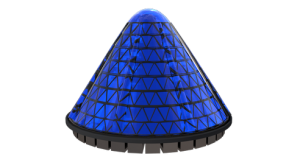Interested in investing in solar, but at a smaller level than some multi-megawatt facility? Then check out Mosaic. I’m not affiliated with them and am not a current investor, but it’s a neat business model that I thought I’d pass along. They treat your investment like a loan, to fund smaller scale solar energy projects. Most projects listed are returning 4.5%, so it’s not some get rich quick scheme, but not a bad investment all in all.
Continual drop in solar energy prices – grid parity
Solar electricity is moving ever closer to grid parity, meaning the cost is comparable to existing grid supplies (coal, gas, etc). This is a pretty significant milestone, as politics have failed (and will continue to do so) in substantially reducing CO2 emissions…but if solar becomes less expensive than fossil fuel electricity, market forces will take over where governments have failed. A project in Spain recently achieved grid parity with a group of fourteen rooftop solar panel arrays, and in the US, a project by First Solar is producing at less cost than coal. I think we’re moving into a new electricity marketplace, where people are going to start asking why we’re not looking at solar to cut costs, rather than asking why we should pay *more* for solar, as has been the case in past years. I wouldn’t expect your utility bill to decrease though, as the gradual decommissioning of fossil fuel plants is not going to be cheap. But, a big win for the environment – if we can move quickly enough on this.
Also in solar energy news, the world’s largest solar thermal plant, being built in California, recently passed a big test proving that it’s ready to enter commercial service. Solar thermal technology is significant as the thermal energy it collects can be stored to provide energy when there’s a shortage of sunlight (cloudy days, or at night).
Solar power news
The solar power industry continues to make some big advances, in the labs at least. First up, scientists were able to make silicon crystals at a much lower temperature using liquid metal (read more here)…this has the potential to substantially lower the cost of solar panels, eventually.
A study published in the Environmental Science and Technology journal attempted to answer the question, what is more efficient at transforming solar energy into miles driven in a car – solar (PV) panels, or biofuels? PV panels handily bested biofuels in this comparison. Considering future demands for food with a growing planetary population, and given this new information, it seems that we should be more focused on growing food to eat rather than to be converted into liquid fuel for cars.
Last but certainly not least is some cool technology from Wysips, a transparent solar panel! Well it’s 90% transparent, but really, at that point who’s going to notice. Sure, it doesn’t produce as much electricity as a conventional PV panel…but it DOES make otherwise unproductive surfaces a valuable part of a building’s energy supply, with no architectural or visible impact. Imagine a skyscraper using this on their windows, for example. Or, in the example at the link above, imagine the glass on your iPhone recharging the phone itself when outdoors.
Gravity-powered lamp
 GravityLight is a new LED-based lamp that is powered much like a cuckoo clock…a bag of sand (or anything weighing about 20lbs) is pulled down by gravity, generating electricity to power the LEDs for about half an hour. It’s a neat idea for developing countries. The project is being funded via indiegogo, and have already surpassed their funding goal (with 33 days left in the campaign).
GravityLight is a new LED-based lamp that is powered much like a cuckoo clock…a bag of sand (or anything weighing about 20lbs) is pulled down by gravity, generating electricity to power the LEDs for about half an hour. It’s a neat idea for developing countries. The project is being funded via indiegogo, and have already surpassed their funding goal (with 33 days left in the campaign).
(read more at FastCompany)
Coolest solar panel ever
 I have no idea of this rotating, conical solar panel(?) from V3Solar lives up to their marketing hype (which you can hear in the embedded video below), but it’s far and away the coolest looking photovoltaic system I’ve ever seen. The inner conical section rotates inside of a fixed transparent shell, which in itself seems like a concern…it takes energy to overcome the friction of rotating this 12 hours a day (they say it uses 1A and floats on magnets), but it does seem like a plausible way of addressing efficiency, through optimization of the angle and improved cooling of the cells. Another neat part of this is that, since it’s rotating, the DC produced by the cells is converted to AC by nature of this rotating motion and the junction between that and the fixed base…it should be a simpler conversion process, in theory (which might improve efficiency further).
I have no idea of this rotating, conical solar panel(?) from V3Solar lives up to their marketing hype (which you can hear in the embedded video below), but it’s far and away the coolest looking photovoltaic system I’ve ever seen. The inner conical section rotates inside of a fixed transparent shell, which in itself seems like a concern…it takes energy to overcome the friction of rotating this 12 hours a day (they say it uses 1A and floats on magnets), but it does seem like a plausible way of addressing efficiency, through optimization of the angle and improved cooling of the cells. Another neat part of this is that, since it’s rotating, the DC produced by the cells is converted to AC by nature of this rotating motion and the junction between that and the fixed base…it should be a simpler conversion process, in theory (which might improve efficiency further).
They claim this produces more than 20 times the electricity of a flat panel with the same area of PV cells, though I didn’t see information on the orientation of that flat panel.
Read more over at Gizmag.

